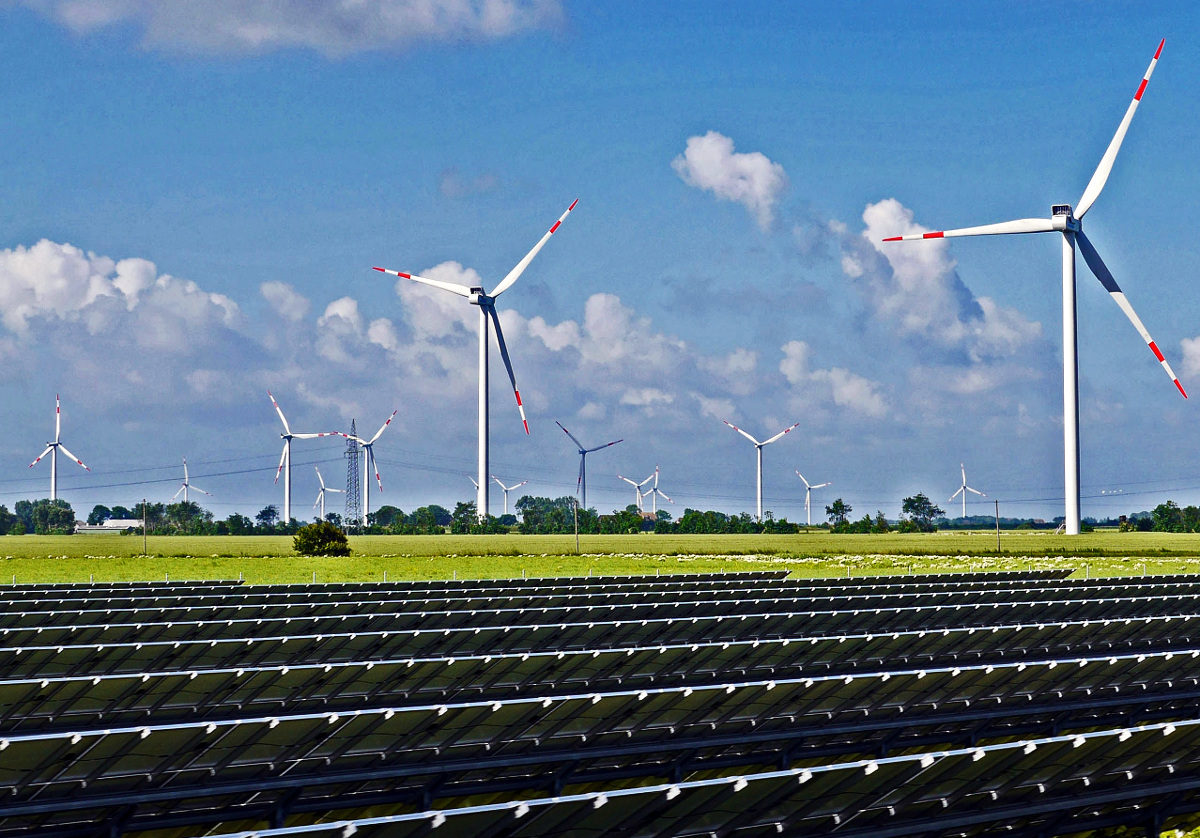India needs to judiciously plan land use for solar and wind generation to achieve its renewable energy ambitions, according to a new report by the Institute for Energy Economics and Financial Analysis (IEEFA).
The report calculates that if India were to achieve a net-zero target by 2050, solar could occupy 50,000-75,000 square kilometers (km2) of land, while wind could use a further 1,500-2,000 km2 (for the land area directly impacted by turbine pads, sub-stations, roads, and buildings) or 15,000-20,000 km2 (the total project area including space between turbines and other infrastructure).
The amount of land that could be needed for solar is equivalent to 1.7-2.5% of India’s total landmass, or 2.2-3.3% of non-forested land.
The report’s author Dr Charles Worringham, researcher and IEEFA guest contributor, explains that the higher end of the land-use range is deliberately generous to allow plenty of leeway for planning.
“This is a precautionary approach for the purposes of planning and putting in place smart land-use policies today for future renewable infrastructure,” he says.
Comparing the effects of large-scale renewable expansion to those of meeting electricity requirements from additional coal-fired power, Worringham noted that the locations for renewable energy generation can be chosen using India’s preferred social and environmental criteria and can be widely distributed across the country.
“Additional coal can only come from already heavily mined districts or from new coal blocks, which are often in significant forest areas and where displacement of Adivasi communities is an issue.
“Nor does renewable energy permanently alter land and natural resources in the same way as coal.”
The report notes the potential for land-use conflict to arise over renewable energy installations, even in sparsely populated areas, slowing the rollout of infrastructure.
“Whether or not India commits to a mid-century net-zero emissions target, its huge expansion of renewable energy capacity over the coming decades will enhance energy security enormously, but this requires a large amount of land for infrastructure,” says Worringham.
“The energy transition will also require important choices about where this infrastructure should be located. But careful planning and solutions like agrivoltaics, distributed energy systems, and offshore wind can also greatly reduce the potential for renewable generation to conflict with social and environmental values whilst diversifying and strengthening India’s national grid. By bringing more generation closer to both urban and rural loads, transmission costs could also be kept in check.”
Recommendations
The report discusses how to maximize the benefits and minimize the costs of land use for the energy transition. Recommendations for policymakers fall into three categories.
1. Minimising total land-use requirements through offshore wind, distributed rooftop solar, and solar on artificial water bodies.
2. Optimizing the identification and assessment of land. Measures include developing clear environmental and social criteria for rating potential sites and undertaking comprehensive independent assessments of potential sites against these criteria in advance of tenders or project proposals. Tenders must be designed to incentivize the use of the highest-ranked locations (those of least environmental and social concern). Further, widely distributed renewable generation at a range of scales must be supported.
3. Increasing the stock of potentially suitable geographically diverse lands by boosting the uptake of agrivoltaics where crops, soils, and conditions are suitable and yields can be maintained or improved.
Agricultural land has the potential to host a much larger proportion of renewable generation, providing a boost to the rural economy and reducing pressure on other land, according to the report.
Nurturing an Indian agrivoltaics sector could provide benefits to farmers such as a second income stream, says Worringham.
This content is protected by copyright and may not be reused. If you want to cooperate with us and would like to reuse some of our content, please contact: editors@pv-magazine.com.









By submitting this form you agree to pv magazine using your data for the purposes of publishing your comment.
Your personal data will only be disclosed or otherwise transmitted to third parties for the purposes of spam filtering or if this is necessary for technical maintenance of the website. Any other transfer to third parties will not take place unless this is justified on the basis of applicable data protection regulations or if pv magazine is legally obliged to do so.
You may revoke this consent at any time with effect for the future, in which case your personal data will be deleted immediately. Otherwise, your data will be deleted if pv magazine has processed your request or the purpose of data storage is fulfilled.
Further information on data privacy can be found in our Data Protection Policy.